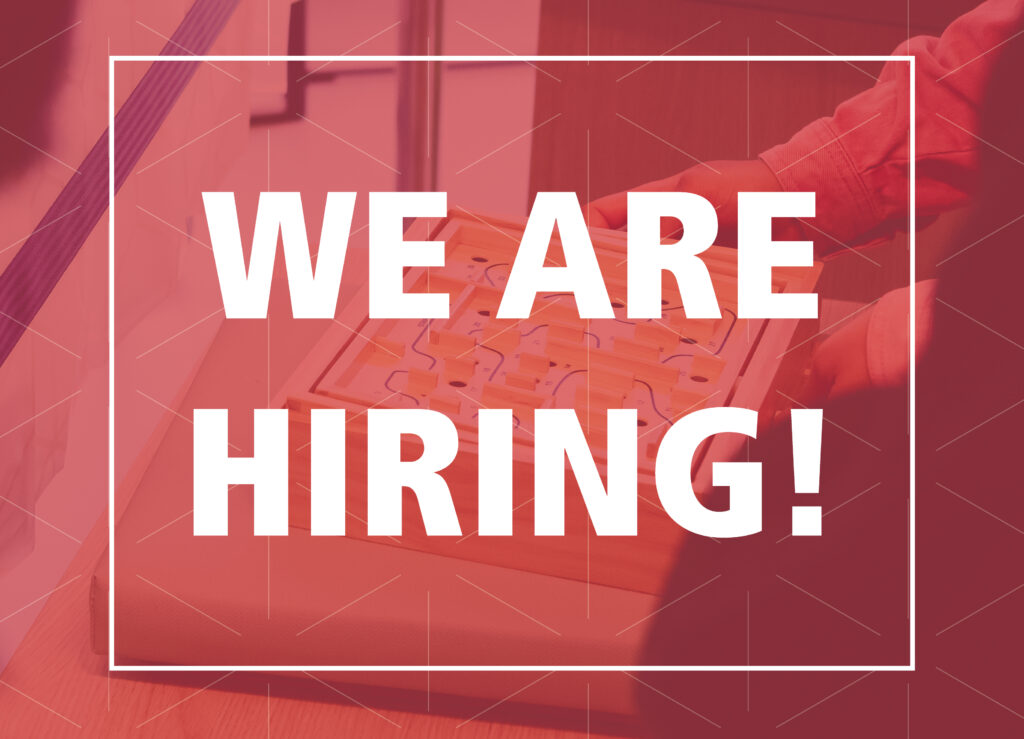Insight
Is there anyone who reads the “Terms and Conditions”?
Creating a visceral experience of personal data flow with noise
Introduction
Let’s be honest here. Does anyone ever read the “terms and conditions” (T&C)? We are mostly unaware of the risks involved in our online behavior. Most of us do not even know or do not care which cookies we accept.
In our first week at the Digital Society School (DSS), our challenge was to investigate personal data flow and create a design that gives users a visceral experience while surfing the net. Our group has diverse backgrounds and we wanted to use these different perspectives to redesign digital products and services so that people become more aware of their data flow while using them. The design that our group made questions the dynamics between tech companies and their users.
What is happening to our data?
Currently, personal data are used by companies to understand human behaviors and what influences people’s decisions. Internet users’ data are being mined and companies who mine this data profit from it by creating A.I. capabilities. Besides, the many privacy breaches of tech companies that process this data, what is worrying for consumers and the public is that companies are being dishonest about the extent to which they use the data. For example, while many people are afraid of their secrets being out on the streets, it is rather the ‘profiling’ (the creation of digital twins) that creates further manipulation capabilities for companies without ‘strictly’ breaching privacy laws.
Whether it’s information about the search location, personal user information, or time logged in, we do not spend enough time to reflect on the depth of personalized information that is being collected from us. While users are more familiar with cookies and T&C as being a source of possible data collection, they are being regulated in most regions. For example, the ePrivacy Directive of the EU requires website owners to withhold all cookies and trackers until users have given explicit consent to their activation. There are other important data with the possibilities of being mined but these are not yet getting much attention. For example, there was a report about Apple employees listening to the voices of users, even the most private and intimate ones. Although the company later apologized, that does not change the fact that there might be other sources of data leaks that the public does not know yet.
Critical Making
One of the DSS principles is, “Show don’t tell. Making things tangible help think and communicate.” This has to do with the concept of critical making. When you hear that you are going to make something, you might think that you need to be concerned about how it looks and functions. Ratto, a proponent of critical making emphasizes using hands-on techniques to augment the process of critical thinking about information systems.
Engineering, for example, often overemphasizes principles like efficiency and productivity that contribute to a consumer-oriented culture that overworks, overproduces, and overconsumes. Critical making intervenes by allowing designers and the public to break out of this cycle, step back, and mindfully reconsider a broader spectrum of human experience. It also strives to highlight people, perspectives, and practices that are forgotten in conventional product development workflows: and consider the diverse complexities of what it means to be human. (What is Critical Making? By: Garnet Hertz)
We thought critical making would be a good method for the whole team to understand data flow, which is normally invisible and unperceivable.
“Squeaky”: A speculative design of a computer mouse
Squeaky is a speculative design of a mouse that helps people become aware of when and how their data is being mined and be able to take appropriate action. The intent of our project, Squeaky, is to help re-establish the trust between the companies providing the services and the users using them.
We based the idea of Squeaky on 3 main issues around data privacy.
- People are unaware or just don’t care about the implications of their data being collected
- People are accepting T&C without reading the fine print
- Companies make profit from the sales of user data without the consent of the user.
Our challenge and central question from DSS was “How might we create a visceral experience of personal data flow”.
To create a visceral experience means that we involve the senses of the body and generate physical reactions in the users. We focused on impacting the sense of touch, hearing, and vision to do this.
Dataflow during internet surfing happens very fast; from accepting cookies that let you access the information on a website to creating an account on a website that you might never visit again. Our data end up in databases of companies that we do not even remember.
Our prototype (Squeaky Mouse) makes unpleasant noises while the user scrolls through web pages to make them conscious of possible data theft. This ‘visceral experience’ is important because it makes otherwise unnoticed events and data leaks physically apparent.
Making “Squeaky”
Rather than creating one solution or answer to the question, through the process of critical making, we came up with the following two prototypes that embody our concept, “Squeaky” the mouse. They show how data flows can be made visceral via digital scrolling and physical scrolling experiences. The rationale behind creating the digital scrolling experience is to have an alternative when the user does not regularly use a physical mouse.
1. Digital Prototype to make users feel how their data is extracted or traced
We tried to make unpleasant sounds in the digital prototype depending on scrolling and express visual representation like our actions are being digitized. You can play the prototype from this p5.js Web Editor. Press the play button on this page, scroll down, and don’t forget to turn on the audio. 😉
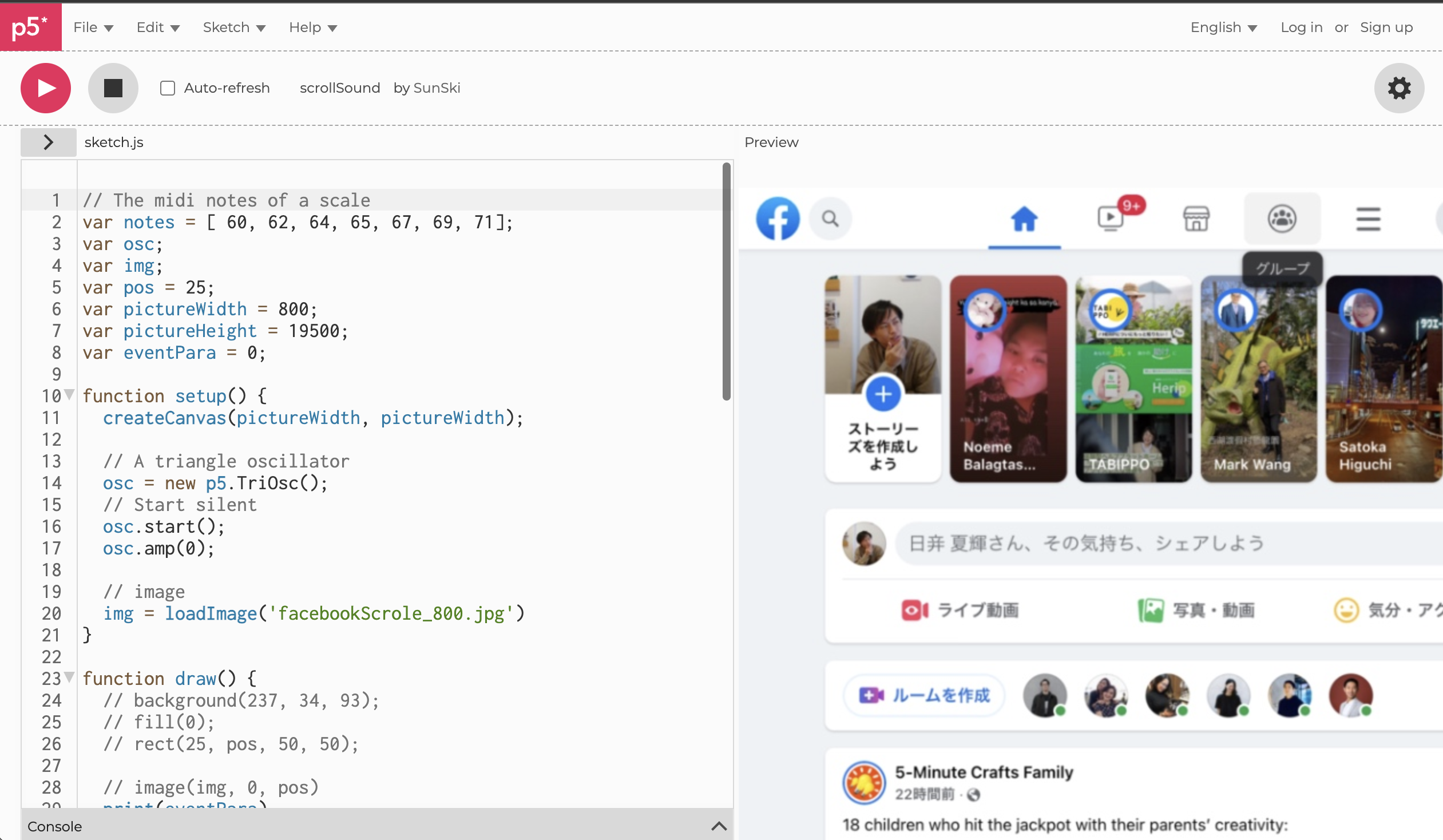
Explanation of the digital model
We experimented with p5.js for creating the prototype with the motto, “done is better than perfect”. Quickly creating prototypes and getting feedback can speed up the improvement process. As we showed the prototype to other members, one of them suggested that it would be interesting to change the sound to ‘slurping sound’ as if tech companies extract your data.
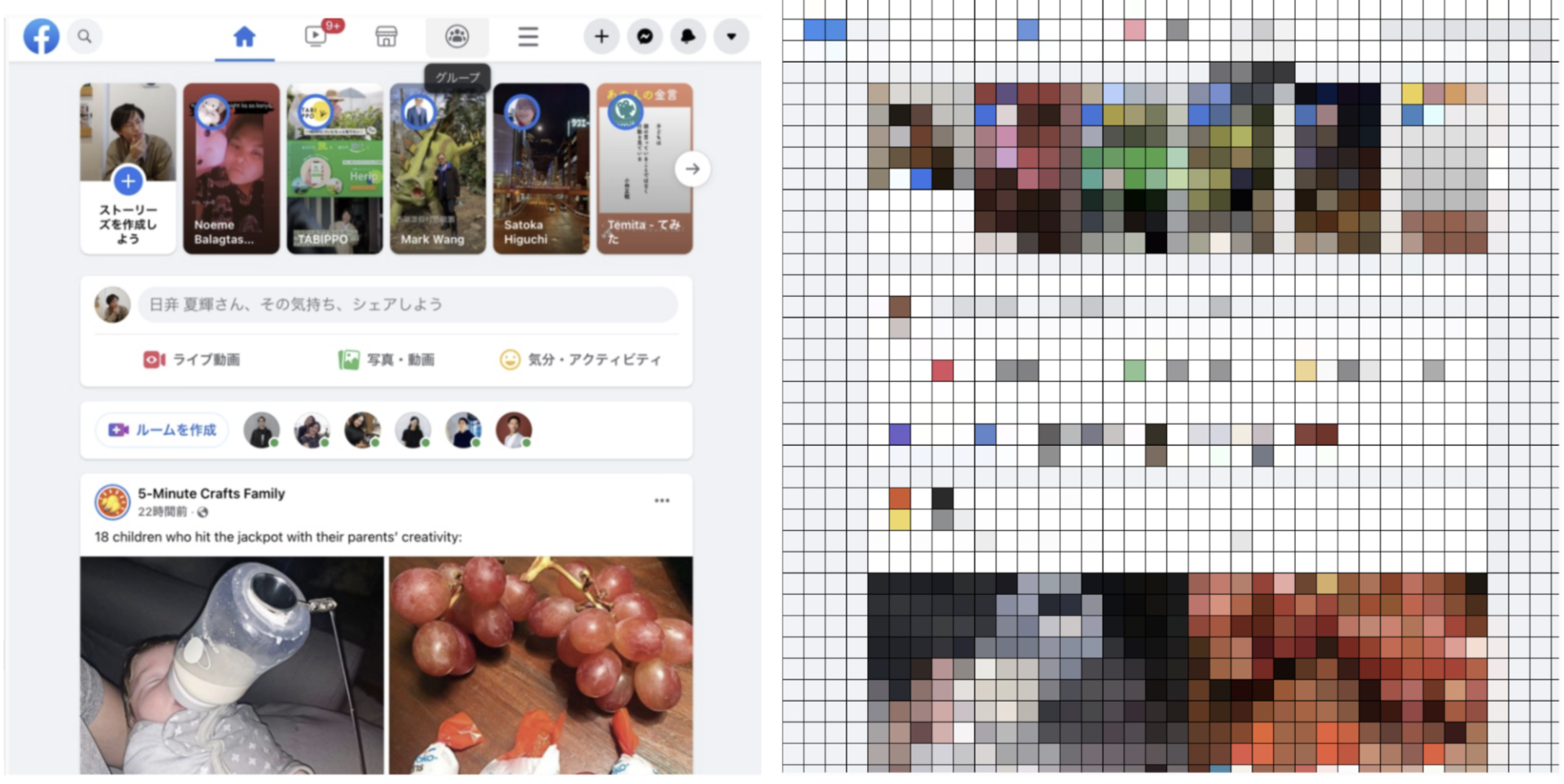
A screen of the digital prototype showing a scrambled screen while scrolling with the squeaky mouse.
What we needed to know was how we detect mouse movement, get a picture from Facebook page and create noise, add visual effects to the screen. The first thing a programmer does is not to write code, but just to google it. We found the references below.
- Mouse Move: mouseWheel
- Screen Shot: FireShot
- Noise: Piano
- Visual Effect: Mozaic
When it comes to noise, piano sounds were not unpleasant, but making sounds random each time a scroll was detected felt like noise, which reflected better the unpleasantness of personal data leaks/theft. After all, we combined these found codes to complete the prototype.
2. Physical Prototype to make data flows tangibly
The physical prototype is still under development. The working principle is based on embedding a music box that is activated because the scroll wheel of the music pushes it mechanically. Some challenges are to (retro)fit both the electronics and the music box. To get a grip on this, we used 3D design and 3D printing technology to prototype.
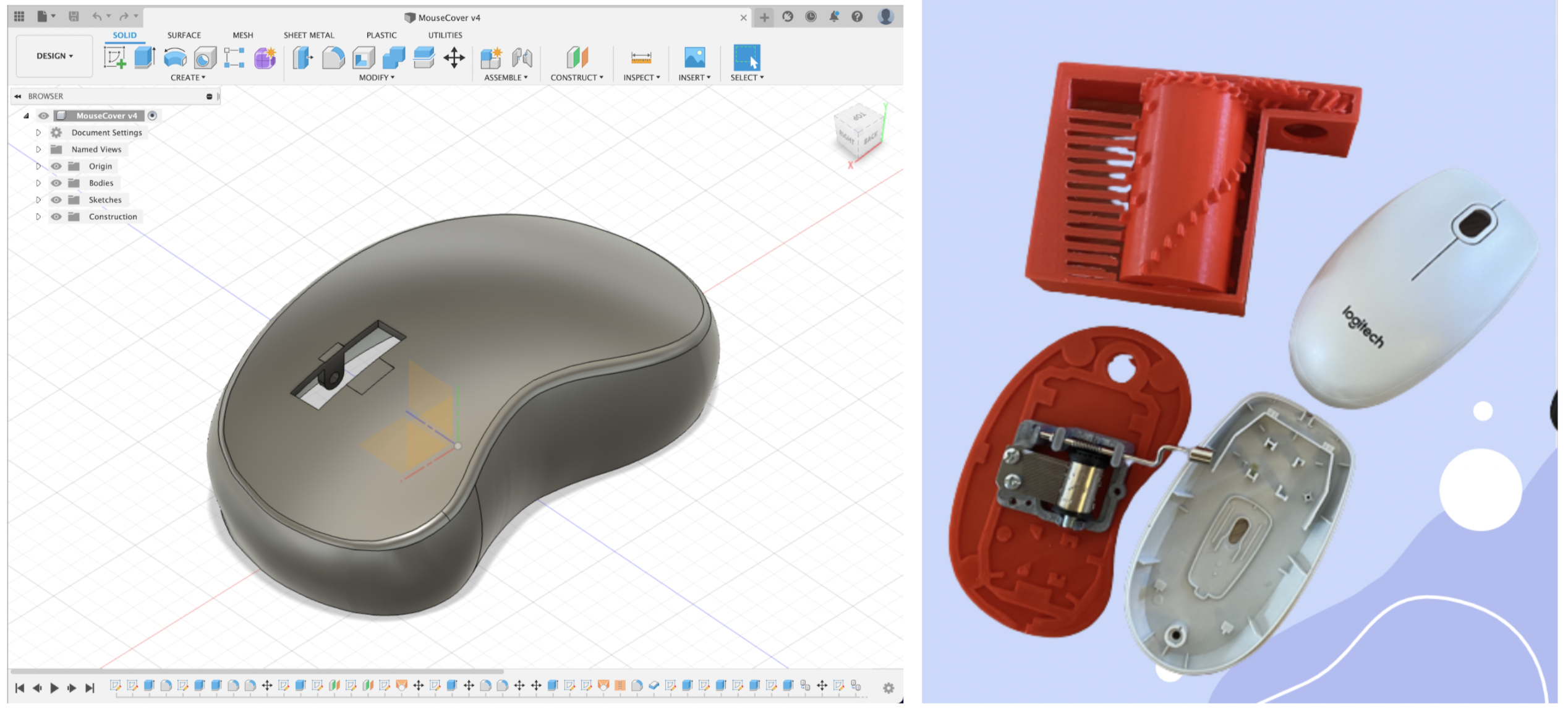 3D model and physical Prototype
3D model and physical Prototype
Explanation of physical model
To further safeguard users’ data exposure while surfing the net and to create an alternative to the digital squeaky mouse which we believe could come in handy when the digital mouse is not available or there is a bug in the code, we built an Analogue Squeaky Mouse.
This analog mouse produces an unpleasant sound anytime the user scrolls through pages on the internet as a reminder of how much data could be exposed while surfing and possible threats attached to cookies and acceptance of T&C.
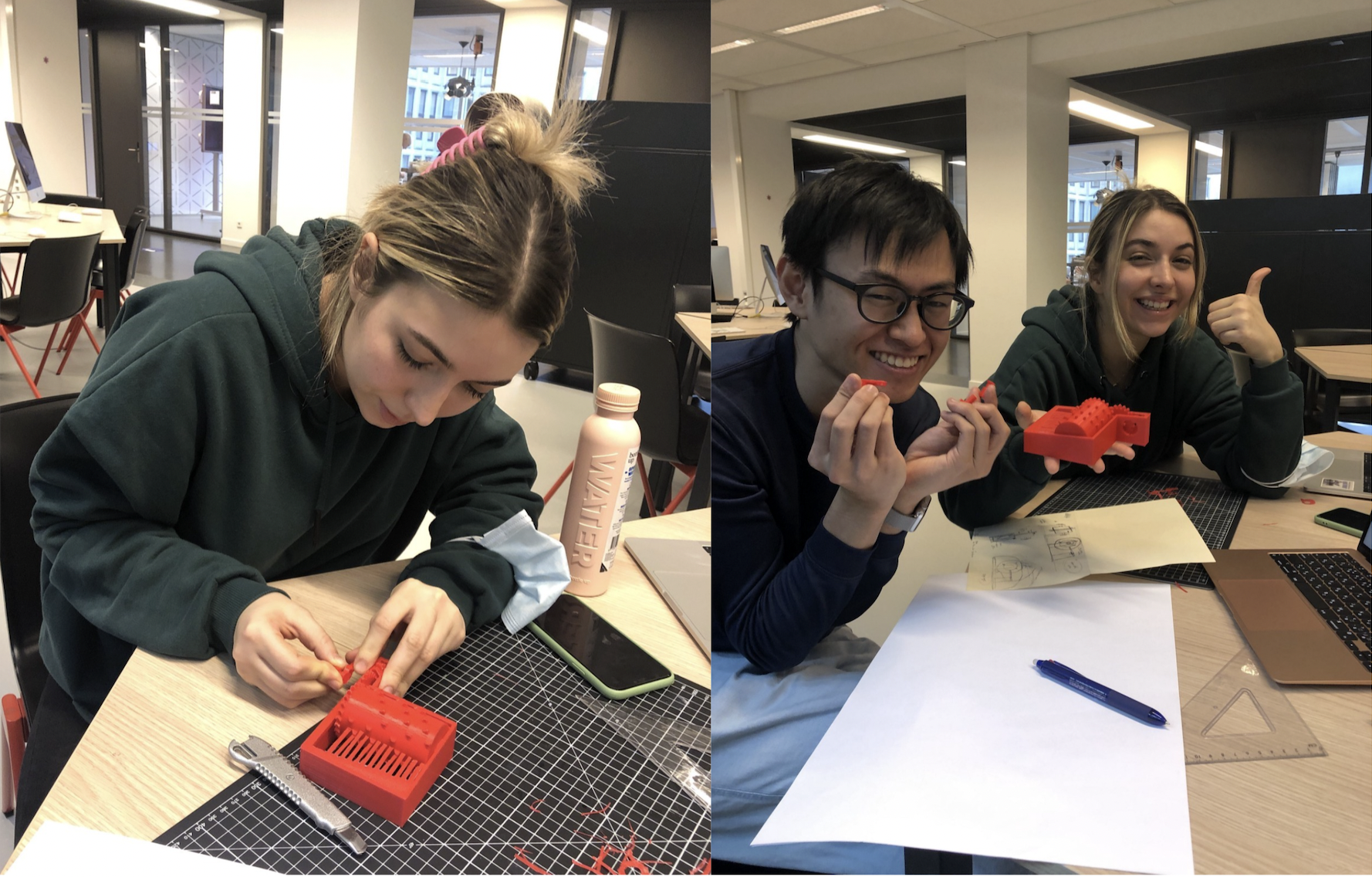
To build this, we designed a bean-shaped mouse with fusion 360 software. This design was then 3D-printed on a 3D printer with a plastic filament.
For the sound, we used the smallest music box and altered the alignment of its strings to make the final sound unpleasant. With the final analog mouse, we were able to make the users of the mouse have a visceral experience of physical touch and sounds which gets them conscious of personal data flow while surfing the internet.

Conclusion
Being our debut project, executed in one week, it was interesting how people reacted to both the digital and analog prototypes. Most people agreed that in the past, they have had to deal with the fear of their data being mined while surfing the internet and it is used for the wrong reasons. It is exciting that our investigation was able to open the discussion around this subject.
When we presented our project, the reaction and feedback we got from our peers at DSS were incredibly positive. They were excited to use the mouse and hear the noise. Afterward, they started to brainstorm together and thought about different noises we can use for the mouse. We received a question about why we designed one digital and one analog mouse, and the answer to that is “accessibility”. We thought people who don’t have access to the digital mouse can always experience it with the physical model, or vice versa.
Our team
This project brings together team members from diverse backgrounds and cultures:
- Bambo Adebiyi — A Nigerian Fashion Designer and a Supply Chain expert with a keen interest in Artificial Intelligence.
- Dilara Tuzcuoğlu — A citizen of Germany who is interested in UX Design and Branding with a background in Visual Arts and Psychology.
- Natsuki(Natch) Hibi— A Japanese developer who is interested in design thinking and programming.
- Subashree(Subu) Cloudhury — A student of New Media and Digital Cultures who is interested in all things Design and New Media.
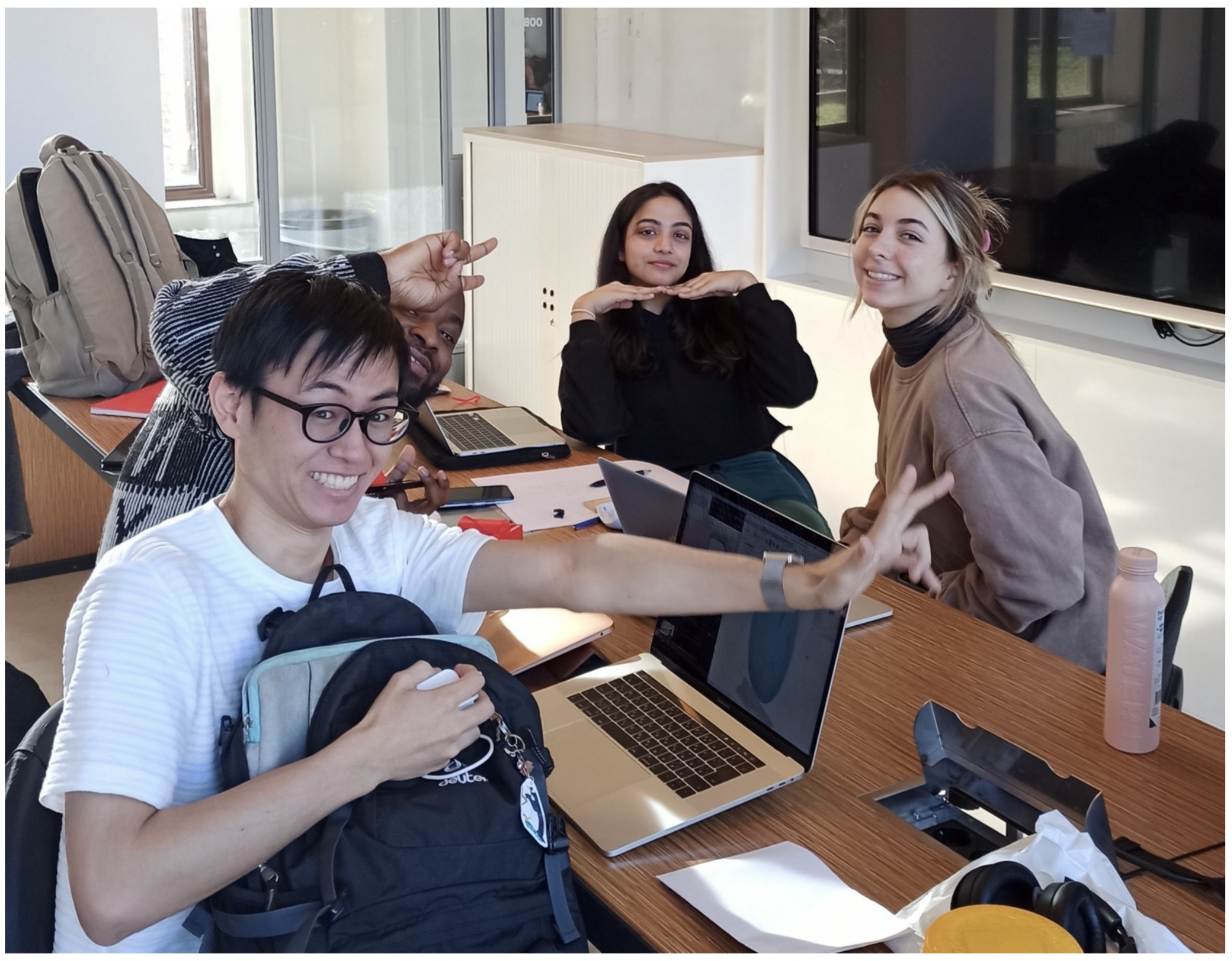
- SmaSurf クイック検索


